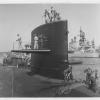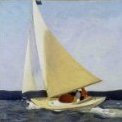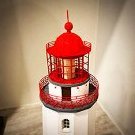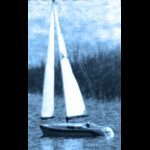
russ
Members-
Posts
3,086 -
Joined
-
Last visited
-
 Archi reacted to a post in a topic:
Thickness sanders.....Byrnes vs Micro Mart
Archi reacted to a post in a topic:
Thickness sanders.....Byrnes vs Micro Mart
-
 BETAQDAVE reacted to a post in a topic:
Phantom by _SalD_ - FINISHED - 1/8" scale
BETAQDAVE reacted to a post in a topic:
Phantom by _SalD_ - FINISHED - 1/8" scale
-
 ccoyle reacted to a post in a topic:
Charles W Morgan by Brucealanevans - FINISHED - Model Shipways
ccoyle reacted to a post in a topic:
Charles W Morgan by Brucealanevans - FINISHED - Model Shipways
-
 Knocklouder reacted to a post in a topic:
Mayflower by SawdustDave - Finished
Knocklouder reacted to a post in a topic:
Mayflower by SawdustDave - Finished
-
 Saburo reacted to a post in a topic:
TRITON Cross Section bbrockel
Saburo reacted to a post in a topic:
TRITON Cross Section bbrockel
-
 robert952 reacted to a post in a topic:
Maine Peapod by JesseLee - FINISHED - Midwest Products - 1:14 - Early 1900's
robert952 reacted to a post in a topic:
Maine Peapod by JesseLee - FINISHED - Midwest Products - 1:14 - Early 1900's
-
 Gabek reacted to a post in a topic:
Swift by GabeK - FINISHED - Artesania Latina - first wooden ship build
Gabek reacted to a post in a topic:
Swift by GabeK - FINISHED - Artesania Latina - first wooden ship build
-
 yvesvidal reacted to a post in a topic:
Biloxi lugger Captain Roy 1948 by russ - 1/48 scale - POB - Finished
yvesvidal reacted to a post in a topic:
Biloxi lugger Captain Roy 1948 by russ - 1/48 scale - POB - Finished
-
 russ reacted to a post in a topic:
Red Jacket by MrBlueJacket - FINISHED - BlueJacket Shipcrafters - Scale 1/8" = 1' (1:96)
russ reacted to a post in a topic:
Red Jacket by MrBlueJacket - FINISHED - BlueJacket Shipcrafters - Scale 1/8" = 1' (1:96)
-
 russ reacted to a post in a topic:
Red Jacket by MrBlueJacket - FINISHED - BlueJacket Shipcrafters - Scale 1/8" = 1' (1:96)
russ reacted to a post in a topic:
Red Jacket by MrBlueJacket - FINISHED - BlueJacket Shipcrafters - Scale 1/8" = 1' (1:96)
-
 russ reacted to a post in a topic:
Red Jacket by MrBlueJacket - FINISHED - BlueJacket Shipcrafters - Scale 1/8" = 1' (1:96)
russ reacted to a post in a topic:
Red Jacket by MrBlueJacket - FINISHED - BlueJacket Shipcrafters - Scale 1/8" = 1' (1:96)
-
 russ reacted to a post in a topic:
HMS VICTORY by Kevin - FINISHED - Caldercraft - 1/72
russ reacted to a post in a topic:
HMS VICTORY by Kevin - FINISHED - Caldercraft - 1/72
-
 russ reacted to a post in a topic:
HMS VICTORY by Kevin - FINISHED - Caldercraft - 1/72
russ reacted to a post in a topic:
HMS VICTORY by Kevin - FINISHED - Caldercraft - 1/72
-
 russ reacted to a post in a topic:
HMS VICTORY by Kevin - FINISHED - Caldercraft - 1/72
russ reacted to a post in a topic:
HMS VICTORY by Kevin - FINISHED - Caldercraft - 1/72
-
 russ reacted to a post in a topic:
HMS VICTORY by Kevin - FINISHED - Caldercraft - 1/72
russ reacted to a post in a topic:
HMS VICTORY by Kevin - FINISHED - Caldercraft - 1/72
-
 russ reacted to a post in a topic:
HMS VICTORY by Kevin - FINISHED - Caldercraft - 1/72
russ reacted to a post in a topic:
HMS VICTORY by Kevin - FINISHED - Caldercraft - 1/72
-
 russ reacted to a post in a topic:
HMS VICTORY by Kevin - FINISHED - Caldercraft - 1/72
russ reacted to a post in a topic:
HMS VICTORY by Kevin - FINISHED - Caldercraft - 1/72
-
 russ reacted to a post in a topic:
HMS VICTORY by Kevin - FINISHED - Caldercraft - 1/72
russ reacted to a post in a topic:
HMS VICTORY by Kevin - FINISHED - Caldercraft - 1/72
-
Matt: You are off and running. I agree that the fairing process is not complete, but it is not a bad thing. We have all been there before I assure you. I would suggest removing the planks and doing some more sanding and checking before you begin again. That might sound drastic, but you can get extra planking strips from a local hobby or craft store if you need to. A small block of wood with some sanding paper wrapped around it or even rubber cemented to it will do the job of fairing. You can use a strip to check against the hull as you go. Sand a little and check, and then sand a little and check again. It will take long before you have a nice smooth hull to plank. Of course, the main thing is to have fun and satisfy your own creative desires. Good luck with your model. Russ
- 68 replies
-
- virginia 1819
- artesania latina
-
(and 1 more)
Tagged with:
-
Peter: Very nice job. I have been looking in on this build over time and your finished model is very nice. Congratulations. Russ
- 236 replies
-
- artesania latina
- kitbashing
-
(and 2 more)
Tagged with:
-
I agree that the netting looks very good. I have run the line across a hot light bulb and had good results. The heat melts the beeswax into the line. Russ
- 60 replies
-
- pride of baltimore ii
- Model Shipways
-
(and 1 more)
Tagged with:
-
Andy: I would start with square stock and mark out the lines to make it octagonal and then round it out to make your spar. You can do this with careful marking with a sharp pencil and work with a file to make it octagonal. You can then finish it by hand sanding or by chucking the piece into a power drill and using sandpaper to round it and taper it. There are several different methods you can use. The main thing is that the square stock has the grain running along its length. With a dowel, the grain could be running in any direction which is one reason why it warps. Russ
-
Bill: Nice to see you back at it. Great work as usual. Russ
- 382 replies
-
- sovereign of the seas
- carving
-
(and 1 more)
Tagged with:
-
Biddlecombe has tables for a schooner's rigging. That is where the value is. Russ
-
Sam: I would think that would work out okay. You might consult Biddlecombe since it is a little later and has more information on the schooner rig. Russ
-
Sam: The lower gaff that you have circled is probably the fore gaff for the foresail. This is a regular part of the schooner rig. That foresail is loose footed with no boom. Ideally, it would be peaked up at a higher angle than what is shown. The foresail would be brailed up when furled. The fore and aft main sail could be furled by lowering the gaff or by brailing. If this was a brig rig, the that mainsail would be the spanker or driver sail. In the schooner rig, it is the mainsail. The other ones circled further up, I have no idea. Russ
-
Chuck: This will be a beautiful model and a project that modelers will enjoy. I think the planking will be especially nice on this hull. Russ
- 1,784 replies
-
- syren ship model
- winchelsea
-
(and 1 more)
Tagged with:
About us
Modelshipworld - Advancing Ship Modeling through Research
SSL Secured
Your security is important for us so this Website is SSL-Secured
NRG Mailing Address
Nautical Research Guild
237 South Lincoln Street
Westmont IL, 60559-1917
Model Ship World ® and the MSW logo are Registered Trademarks, and belong to the Nautical Research Guild (United States Patent and Trademark Office: No. 6,929,264 & No. 6,929,274, registered Dec. 20, 2022)
Helpful Links
About the NRG
If you enjoy building ship models that are historically accurate as well as beautiful, then The Nautical Research Guild (NRG) is just right for you.
The Guild is a non-profit educational organization whose mission is to “Advance Ship Modeling Through Research”. We provide support to our members in their efforts to raise the quality of their model ships.
The Nautical Research Guild has published our world-renowned quarterly magazine, The Nautical Research Journal, since 1955. The pages of the Journal are full of articles by accomplished ship modelers who show you how they create those exquisite details on their models, and by maritime historians who show you the correct details to build. The Journal is available in both print and digital editions. Go to the NRG web site (www.thenrg.org) to download a complimentary digital copy of the Journal. The NRG also publishes plan sets, books and compilations of back issues of the Journal and the former Ships in Scale and Model Ship Builder magazines.






